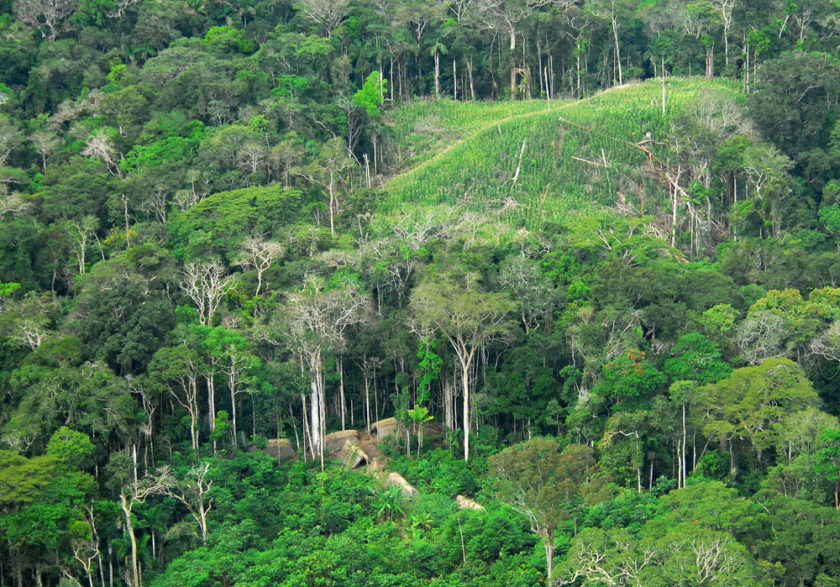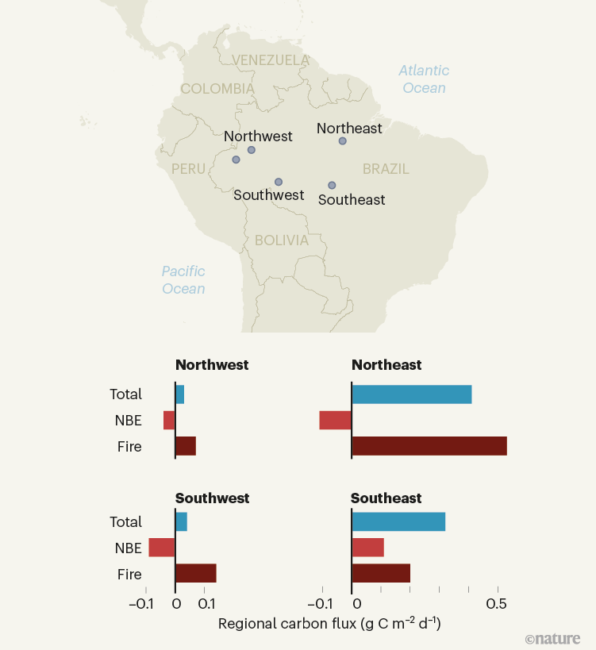
When you think of the Amazon rain forest what perhaps immediately springs to mind is the idea that it acts like a giant sponge that soaks up CO2 and emits life giving Oxygen. A new paper has been published in Nature that is screaming a rather dire red warning at us.
Nature: Amazonia as a carbon source linked to deforestation and climate change
Published July 14, 2021, the paper reveals the rather startling news that Southeastern Amazonia now acts as a net carbon source (total carbon flux minus fire emissions) to the atmosphere.
This is not via modelling, but via direct air sampling. From 2010 to 2018 the researchers ran over 590 sampling missions. This consisted of twice monthly measurements over four distinct regions.
Here is a graphical illustration of the locations along with a quick summary of the results of their measurements …

Within the Above, NBE = Net Biome Exchange. This refers to the average annual balance of CO2 absorbed by forests for photosynthesis compared with the amount of CO2 produced by the decay of organic matter. Obviously as a season progresses from wet to dry, measurements change, so this takes all of that into account.
- KEY POINT: negative NBE values indicate that the forest acts as a carbon sink. As you can see in the above , that is no longer true in the southeast.
- ‘Fire’ represents the average carbon emissions produced by fires.
- ‘total’ represents the sum of NBE and fire emissions.
Yes, that total is indeed telling you that when ‘fire’ emissions are also factored in, then all Amazonia regions are emitting more CO2 than they absorb. Take ‘fire’ out, and the southeast is still generating more CO2 than it absorbs.
Northwestern Amazonia
The bar chart measurements for this region looks low. That’s actually a good thing because it means this region is close to carbon balance. It is perhaps like this because it is almost always very wet, and shows little seasonal variation in growth and decay.
Carbon balance is the ideal – it means that about as much carbon is being taken up by plants for growth as was emitted from decay processes.
As for the rest of Amazonia, it is not so good.
South and East Amazonia
Dry seasons have been getting longer. When it is the wet season, the researchers noted that things were in carbon balance, but once the dry season kicks in, it becomes a different story. Hotter and dryer years lead to more CO2 emissions via decomposition and fire.
The Amazonia Climate is Changing
Nature reports …
Eastern Amazon sites have warmed by as much as about 0.6 °C per decade during the dry season over the past 40 years. This is more than three times the rate of global warming and about the same rate as for the Arctic. Wet-season and western Amazonian forests have warmed, too, but at a much slower rate. Warming rates in the dry season for eastern Amazonia might have been amplified by deforestation and forest degradation
When the future of Amazonia is pondered over it is inevitable to conclude that it will one day have an uncertain future. What this new study reveals is that the “uncertain future” in no longer theory or something yet to happen, it is here now.
This also is not just an issue for those that live in the region, it impacts all of us.
